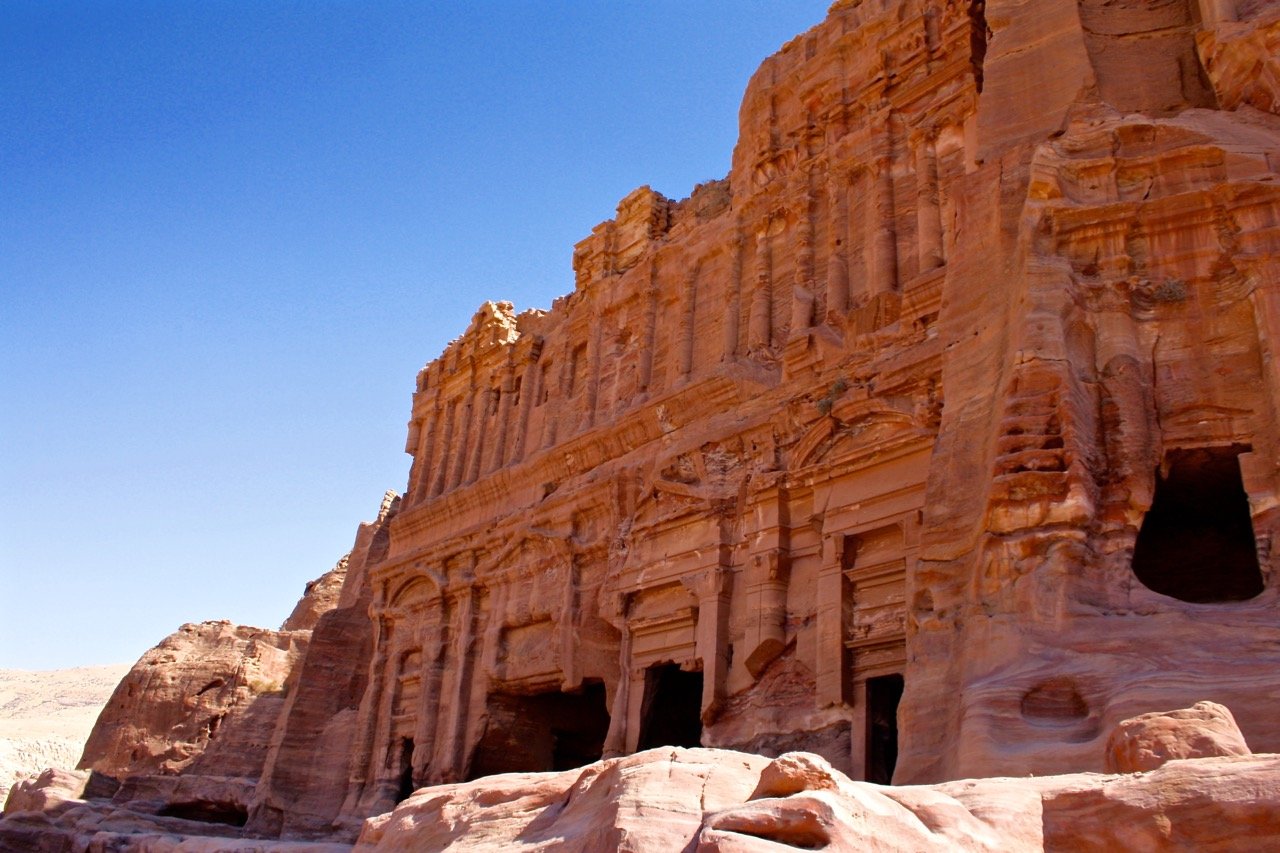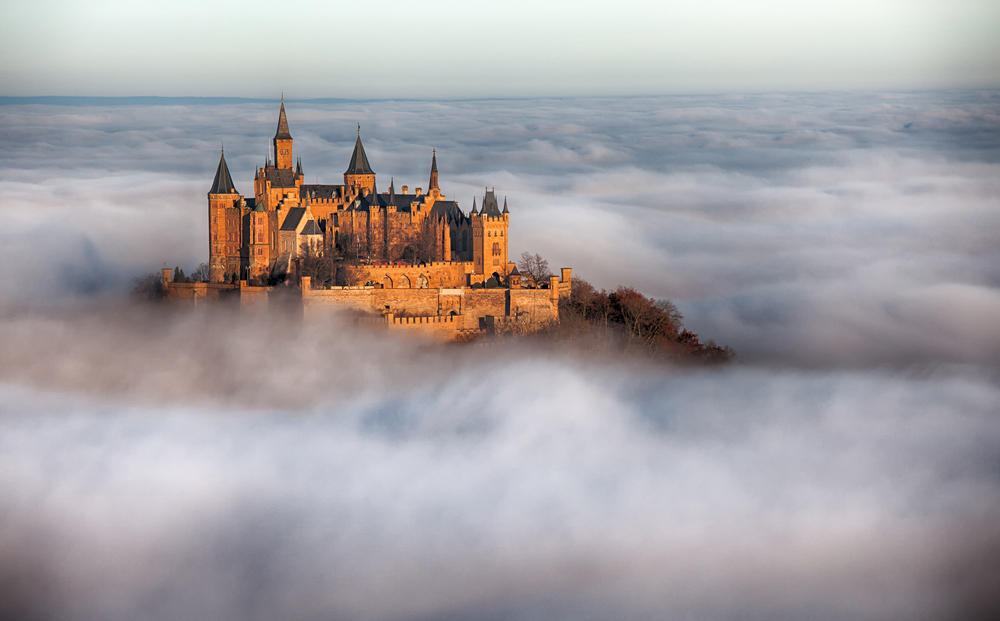The Hashemite Kingdom of Jordan is just a three-hour flight from Dubai, and a two-hundred-thousand-year journey through the history of humankind. More than a country, Jordan is one of the world’s epic stories.
Our Palaeolithic ancestors wandered north from Africa and made their homes in the cool canyons and caves of this sun-baked land. The smoke of Bedouin campfires has drifted into the Arabian nights for over nine millennia. Prophets wandered these mountains and deserts, receiving visions that shaped three of the world’s great faiths. Greek, Roman, Crusader and Arab armies have thundered across these sandy plains, leaving their mark at thousands of archaeological sites, and in every fiber of Jordan’s cultural DNA. Today, Jordan is the calm heart of a sometimes-restless region.
For Any Inquiry Visit The Official Website of The Jordan Tourism Board
Amman

Amman is the capital of Jordan. It was known by the ancient Greeks as Philadelphia, the city of brotherly love, and that spirit of tolerance continues to this day. Overlooking downtown Amman from its highest hill is the Citadel, the city’s ancient core.
- The Temple Of Hercules – Standing tall over the Citadel are the two remaining pillars of The Temple Of Hercules, a Roman temple that in its day, dwarfed many in Ancient Rome.
- Citadel’s base – Beneath the pillars, follow the shadows as they sweep across the Citadel’s many layers of history, from the Bronze Age to Byzantine times. At the Citadel’s base, take in the views from the 6000-seat Roman Theatre, and watch the day-to-day dramas of Amman unfold below.
- Museums and galleries – Journey deeper into Jordanian history and culture at Amman’s museums and galleries. While much of the kingdom’s story is rendered in stone, at The Royal Automobile Museum, Jordan’s modern history gleams, in shining chrome.
- Hospitality – Jordan’s hospitality is legendary, and you’ll find that welcoming spirit all over Amman.
- The Duke of Mukhyber’s Residence – You’ll find it through the open doors of the Duke of Mukhyber’s Residence, where the aromas of vintage books and faded furnishings will transport you back to the 1940s.
- Street vendors and cooks – It’s in the hands of street vendors and cooks, for whom tradition and pride are the most essential ingredients of all.
- Streets and souks – And you’ll find it in the evening breeze which invites the Ammani into the cool streets and souks, just as it has for centuries.
Jerash

After a day or two in Amman, follow the winds 30 miles north, to the ancient Greco-Roman city of Jerash. Enter the city’s monumental gateway and imagine the scarlet and gold spectacle, which heralded the arrival of Emperor Hadrian’s in the 2nd century. Walk out upon the Hippodrome where the roar of fifteen-thousand Romans and the thunder of chariot wheels could be heard for miles. Rest in the shade of the South Gate, then make the short climb to the Temple of Zeus, and look down upon this imperial city.
Take a seat in the South Theatre, where even in the highest row, the soft strains of the Jordanian bagpipes are inescapable. Wander across the Oval Forum, where the city once gathered for monthly festivals, tedious decrees, and the gladiators’ bloody dance.
Follow the Cardo Maximus north, and you will soon understand that there are few things straighter than a Roman road. The stalls which once lined this half-mile colonnade may long be gone, but the daily operetta of commerce lingers amid the ruins of the central market.
As the sun beats down, envy the Roman shoppers who once paused under the cooling mists of Jerash’s fountains as they returned to home and family.
Climb the steps to the Temple of Artemis, where priestesses danced as she-bears before the goddess of hunting and fertility. Artemis, the daughter of Zeus, was the protector of Jerash, until the 4th century when the Roman gods toppled before the teachings of a Jewish carpenter.
Ajloun Castle

Just a thirty-minute drive to the northwest of Jerash, experience another great clash of faiths, on the ramparts of Ajloun Castle.
Built in the 12th century, Ajloun was one of a string of Arab castles raised by Saladin to halt the Crusader armies as they rode down Jordan’s northern valley, hell-bent on Jerusalem.
The Crusaders have long been vanquished, leaving these hills once more to the herders and their flocks who graze amid the ruins of ancient cities like Pella.
Just an hour’s drive east from Amman, you’ll find even more stillness on the endless gravel plains of the Eastern Desert. Follow the Desert Castle Loop to Qasr Kharana, where Bedouin chieftains emerged from the shimmering horizons to settle tribal scores within the cool confines of its courtyard and 60 rooms.
Qusayr Amra

The castle walls have long vanished, but its fabulous bathhouse remains. Step inside from the blinding desert glare to see frescos from the courtly world of early Arabia materialize through the soft light.
Qasr al-Azraq

For many, the highlight of the Eastern Desert is Qasr al-Azraq. During the Great Arab Revolt of 1916-18, T.E. Lawrence made the castle his winter headquarters. Step into his bedroom, where the young British officer planned exploits which would be forever immortalized in books and in film.
Madaba

After exploring the Eastern Desert, travel southwest to Madaba, an ancient market town famed for its Byzantine mosaics. Most famous of all is the Madaba Map, one of the first depictions of the Holy Lands, and a hallowed destination for pilgrims throughout the ages.
Today workshops all over Madaba ensure the mosaic tradition will endure for generations to come.
Promised Land

Journey further south to explore the Crusader Castles of the King’s Highway, an ancient trading route which took Arabs to Mecca, and Israelites to the Promised Land.
See the Promised Land for yourself from Mount Nebo, just six miles west from Madaba. Stand at the place where Moses first looked out across the Dead Sea to the Land of Milk and Honey, Israel.
Memorial Church

After taking in the mosaics at the Moses Memorial Church, follow the hairpin road down to The Dead Sea; the lowest point on earth. Float upon the saline waters, and cover yourself in the same healing mud that once lured King Herod, The Queen of Sheba, and Cleopatra to these shores.
Emerge from the waters renewed, then relax at your resort and watch the lights of Jerusalem and Bethlehem light up on the West Bank.
The Grand Canyon of Jordan

Follow the Dead Sea Highway south to Wadi Mujib, the Grand Canyon of Jordan. Take one of the many hikes into the lush gorge, and bathe in the cool breath of this harsh, yet forgiving land.
At the Dead Sea’s southern end, visit the cave Lot and his daughters called home after fire and brimstone scorched the cities of Sodom and Gomorrah from the face of the earth.
The Nabataean city of Petra

One city which vanished from the outside world for centuries, only to be rediscovered in 1812, is the Nabataean city of Petra. Enter Petra through the Siq, a narrow rift through earth and time, where the modern world is left further behind with each twist and turn. Emerge from the shadows of this sacred way into the sunlight of Wadi Musa, and gaze up at The Treasury.
Thanks to movies like Indiana Jones and The Last Crusade, the world is now familiar with The Treasury’s grandeur, but nothing can prepare you for the real thing.
Chiseled from the pink sandstone cliffs, The Treasury is the greatest of all Petra’s 500 tombs. But your adventure is just beginning. From here the canyon opens out into the Street of Facades, the vast Nabataean Theatre, and the Royal Tombs.
Petra’s treasures deserve at least a half day. But to really feel the magic of this 100-square mile labyrinth of temples, tombs, and caves, stay longer. For those who linger in the Rose City are rewarded by the new moods and colors that each hour brings.
Wadi Rum

From Petra, follow the desert highway south for 70 miles, to Wadi Rum, the Valley of the Moon. Bathe your spirit in the smoke of a desert campfire. And at dawn, rise to a place beyond words.
From epic landscapes to the monumental ruins of empires, Jordan is a humble reminder that our time on earth is only fleeting. Yet Jordan shows us that sometimes, we can reach out and touch the eternal, and be at one with something far greater than ourselves.



